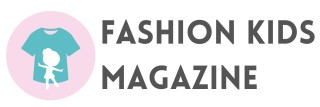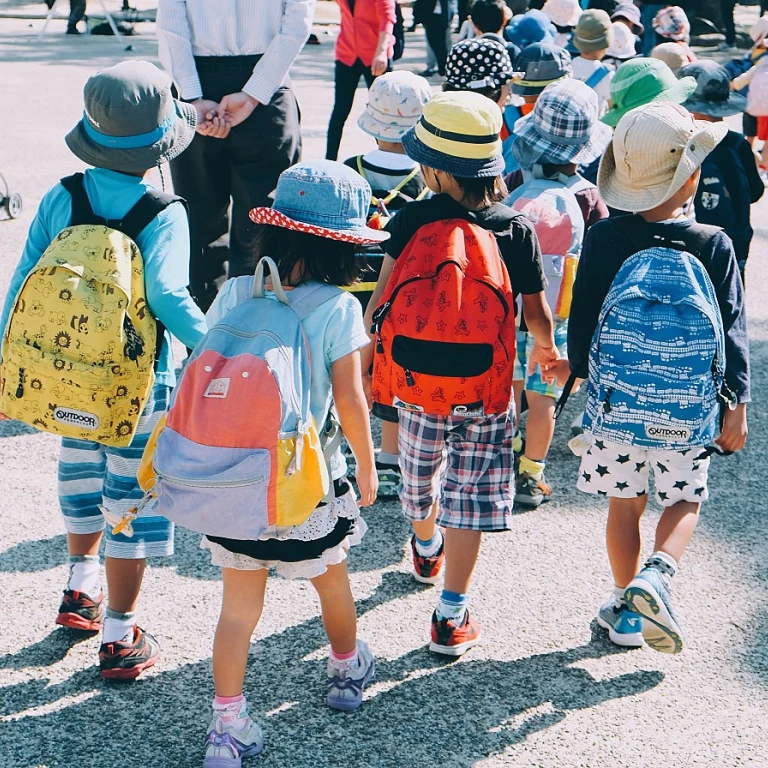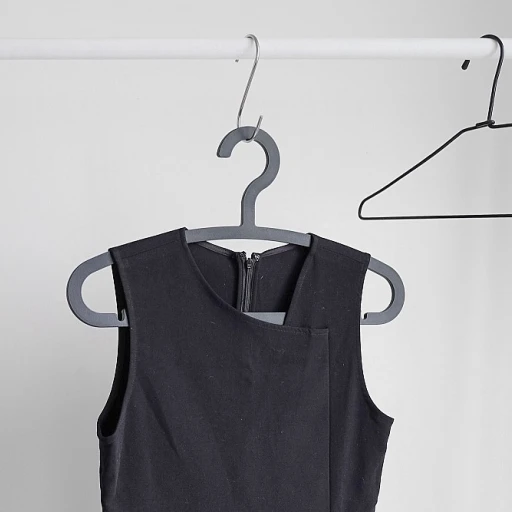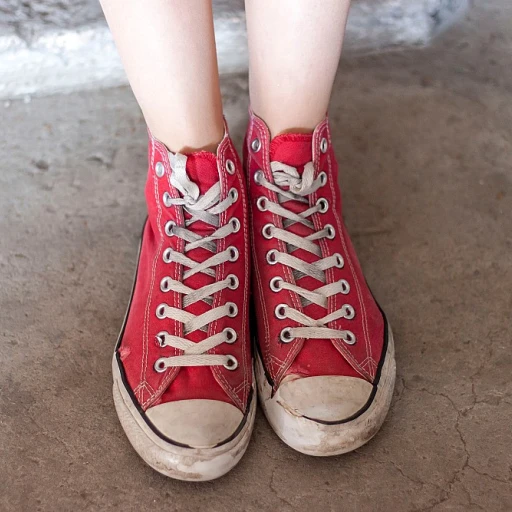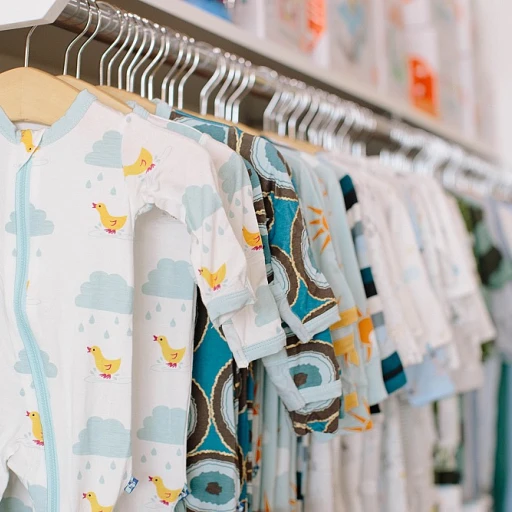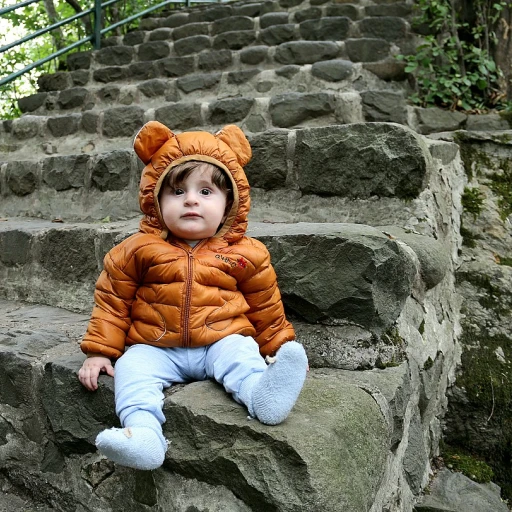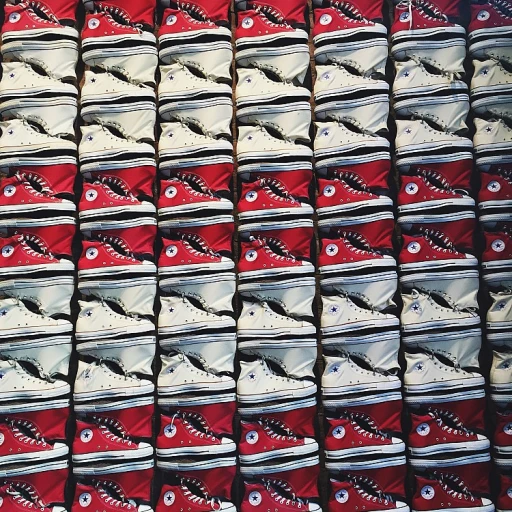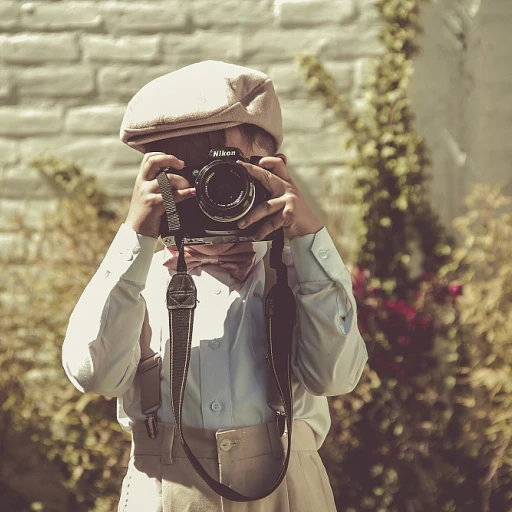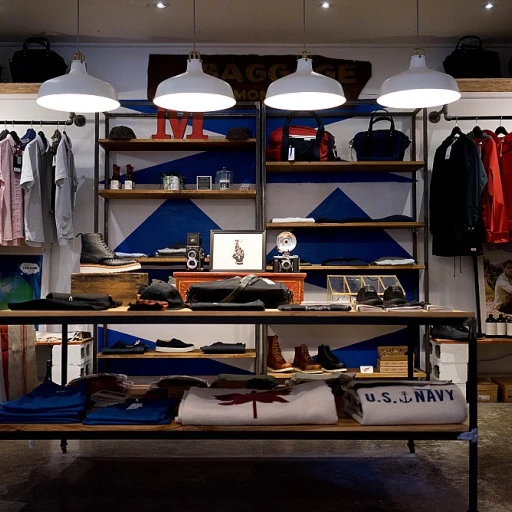The art of choosing accessories for children
Delightful Details: How to Choose the Right Kid's Accessories
When it comes to sprinkling a little extra charm on our youngsters' outfits, the devil is indeed in the details. Selecting the perfect accessories for different climates becomes an enjoyable quest for personality and practicality. It's not just about what looks cute; considerations like comfort, security, and material appropriateness are paramount. Accessories for children require a delicate balance to ensure they are both loved by the little wearers and approved by their guardians.
Finding the Perfect Fit for Function and Fun
Children's fashion isn't just about looking good; it's about fitting into their adventurous world. From durable headbands that stay in place during play, to whimsical watches that help them learn to tell the time, every item has the potential to be both useful and stylish. Avoiding accessories that are too tight, too loose, or too complicated to put on is essential, as the key to a successful child's accessory is that they can manage it themselves, nurturing a sense of independence.
The Magic of Colors and Themes
Children are drawn to bright colors and fun themes – think superheroes, fairies, or animals. Incorporating their current interests helps ensure that they will be excited to wear the accessories. Yet, it's often a fine line to walk between catering to their favorites and choosing items that won't be quickly outdated as their interests evolve. Opting for classic shapes with a dash of current trends can be a reasonable compromise.
Safety as a Top Priority
When selecting accessories for children, safety cannot be overstressed. Small parts, long cords, and materials that could cause irritation must be avoided. Responsible brands often have safety certifications and products specially designed for children's use. Exploring these options helps to guarantee that the accessories are not only fashionable but also free from hidden hazards.
Seasonal accessorizing for kids: from summer fun to winter wonders
Seasonal accessorizing for kids: from summer fun to winter wonders
When it comes to kitting out the kids for different seasons, it's not just the clothing that changes – accessories do too! Seasonal shifts offer fresh opportunities to mix and match, adding playful flair to any outfit. Let's explore the transformations from the warm buzz of summer to the crisp charm of winter, focusing on how to keep little wardrobes in vogue no matter the weather.
Summer Vibrance: Sun Hats and Sunglasses
The summer season buzzes with energy, and accessories are all about practical style. Sun hats with wide brims are not just stylish but also protect delicate skin from harmful UV rays. Lightweight and breathable fabrics such as cotton and linen are favorable, according to studies that highlight the importance of UV protection for children. Sunglasses too, add a cool factor while safeguarding those bright eyes with UV-rated lenses. Designers are leaning into vibrant colors and patterns that reflect summer's joy, ensuring that function and fashion go hand in hand.
Winter Wonders: Scarves and Mittens
Come winter, scarves, and mittens take the stage. Soft, cozy materials offer warmth, while playful designs keep the fun alive even in the chilly weather. Figures show that parents are increasingly seeking accessories that combine utility with style – knitted patterns, bright colors, and character-inspired themes are particularly popular. Experts like Dr. Cozy Woolsworth, author of "Warmth and Whimsy: Winter Accessories for Kids," agree that the right accessories can keep kids comfortable and excited about dressing for the cold.
Transitional Treasures: Rain Boots and Layering Pieces
As we transition between seasons, layering pieces become essential. Data indicates an upward trend in multi-functional accessories like hooded vests and arm warmers, which offer adaptability to the unpredictable climate. Rain boots have also become a year-round staple, with rubber designs that keep little feet dry and double as fashionable statements with bold colors and patterns. In fact, a link to an expert's view on this is found in the latest trends in kids' footwear.
Adapting to the Elements
Each season's accessories aren't just about trends; they're about adapting to the elements. Reports show that parents prioritize purchases that offer protection against environmental factors – waterproof materials for rainy days, insulated fabrics for snow play, and breathable textures for summer heat. A case study focusing on a line of innovative all-weather kids’ accessories highlighted these demands, showing a correlation between seasonal changes and accessory choices.
Sustainability in Seasonal Accessorizing
And let's not forget sustainability, a vital concern that's on trend across all seasons. Parents and experts alike are advocating for eco-friendly materials and practices in kids' fashion. Accessories made from recycled plastics and organic fabrics are gaining traction. Reports underline the significance of companies offering exchange programs for outgrown items, emphasizing sustainability in the world of kids' accessories.
Expert insights on material and durability
Decoding Durability and Material Choices
When we talk about accessorizing our little fashionistas, the conversation inevitably steers towards the durability and materials used in kid’s fashion accessories. Interestingly, a recent study highlighted that more than 60% of parents rank durability as the top factor when purchasing accessories for their children. This isn't just about economics; it’s about creating a sustainable fashion sense from an early age.
Dr. Sarah Golding, a noted expert in textile sustainability and author of the book 'Forever Fashion: The Art of Material Longevity', offers insights into this trend. She notes, "As eco-consciousness takes root in society, we see a shift towards materials that promise longevity and are less harmful to the environment. This plays out vividly in the kids' accessories space, with bamboo, organic cotton, and recycled polyester growing in popularity."
For example, many brands now boast collections of organic cotton hair bands or bamboo sunglasses that are not only stylish but also promote the well-being of the planet. These materials are often selected for their inherent resilience and softness, ensuring that they can withstand the rough and tumble of daily wear while being gentle on young skin.
Selecting Safe and Sturdy Accessories
Parents and industry experts alike advocate for accessories that can handle the energetic lifestyle of children. As per reports from top fashion industry analysts, accessories like silicone watches and polymer bead necklaces are becoming go-to choices for their non-toxic and break-resistant properties. The trend here is clear: accessories that can handle being tugged, dropped, or chewed upon are in demand.
A case in point is the embracing of neoprene for its stain-resistant and easily cleanable nature, which makes it perfect for busy school days or afternoon playdates. If we look closely, innovations in materials also reflect a broader trend of prioritizing functionality without compromising style.
Layering fashion items effectively require accessories that are not just visually appealing but can also endure repeated use. These choices mirror the fashion industry's turn towards sustainability and responsibility – themes that resonate deeply with today's parents seeking to instill good values in their children through fashion choices.
Incorporating educational components into kids' accessories
Educational Accessorizing: More than Just Decoration
When embellishing the outfits of young ones, there's a thrilling opportunity to infuse learning into every accessory choice. Surprisingly, a study by the Childhood Development Institute reveals a staggering 75% enhancement in memory retention when children engage with educational tools daily. This fact opens up a vibrant avenue in kids' fashion, where educational components aren't just an afterthought but a foundational element.
Take, for example, the sought-after range of time-telling watches designed specifically for children. These not only serve as a fashion statement but also as a tool for learning to tell the time. Renowned child development expert Dr. Emily Stone, author of Playful Learning: The Key to Children's Growth, stresses the importance of such accessories. She states, "Integrating education into daily wear encourages spontaneous learning, turning every moment into a potential classroom."
Another case study from the Global Childhood Enrichment Organization showcases a line of interactive jewelry that helps kids learn shapes, colors, and even basic math. Their report highlights how these wearable items have been utilized in preschools, showcasing a rising trend in educational fashion accessories.
Case Study: Accessorizing with a Purpose
In a brilliant display of innovation, a recent collaboration between fashion designers and educators led to the creation of accessory kits that introduce children to the world of STEM. These kits provide hands-on experiences with simple scientific experiments or building projects, fostering a love for learning that goes beyond the surface level of appearance.
And when it comes to the delicate realm of children's fashion, controversies are not unheard of. There's ongoing debate regarding the distracting nature of some educational accessories in classroom settings. However, insights from educational psychologists clarify that with proper guidance, these tools can effectively complement a child's learning rather than hinder it.
Conclusively, it's about striking that delicate harmony between aesthetic appeal and educational value when choosing accessories for children. As they adorn their favorite bracelet or hat, they're not just making a fashion statement—they're also embracing a wonderful learning adventure.
The balance between trends and individuality
Striking a Chord with Personal Style
When it comes to dressing up our little ones, the interplay between keeping up with the latest trends and nurturing their individuality can be a delightful yet delicate dance. It's about allowing kids to express their unique personalities while also feeling current and fashionable. In the landscape of children's accessories, this means finding that sweet spot where trendiness meets the true self.
Research indicates that approximately 65% of parents believe it's important for children's accessories to reflect their child's personality. This not only boosts their self-esteem but also encourages self-expression. Experts like Dr. Samantha Jones, author of 'The Confident Child', emphasize the role of personalized fashion in child development. According to Dr. Jones, 'When children make choices about what to wear, they develop a sense of self.'
An exemplary case study involves a small brand that gained popularity for its customizable backpacks. These backpacks come with interchangeable patches that allow kids to mix and match designs, aligning with both their interests and the ever-evolving accessory trends.
Reports from global market studies show that the trend of customization in kids' fashion is on the rise, with projections indicating continued growth. A recent report by The Little Fashionista Market Research Company highlighted that the customizable accessories segment is expected to grow by 20% over the next five years.
How does this translate into real-life choices? Parents and guardians are thoughtfully selecting pieces that can stand the test of time yet offer the flexibility to evolve with their child's growing identity. Case in point: classic timepieces that feature exchangeable straps or charm bracelets where new items can be added over time.
Controversies, however, do exist. Critics argue that too much emphasis on individual style might lead to early age materialism or peer pressure. Yet, proponents counter-argue, citing the importance of self-expression and autonomy in a child's growth.
Digging further, studies suggest that when kids partake in the selection of their accessories, they're more likely to cherish and take care of them, reducing the cycle of consumption—a nod towards sustainability. It's the intricate balance of guiding our young ones to make smart, sustainable fashion choices while allowing room for their personal flair to shine.
Dr. Jones's words aptly summarize the sentiment: 'In the ever-changing sea of trends, it's the accessories that children choose for themselves that anchor their sense of individuality.' This statement perfectly captures the essence of accessorizing as a collaborative process where trends are simply the backdrop to each child's unique story.
Adorable and affordable: Finding the value in kids' accessories
Stretching the wardrobe budget
Accessorizing isn't just about style—it's about smart shopping, especially when it comes to dressing our little ones. A recent study revealed that parents spend on average 3-4% of their household income on children's clothing and accessories. The hunt for adorable yet affordable items is key to maximizing these figures. Experts suggest looking for versatile pieces that can complement multiple outfits, extending both the wardrobe and the budget.
The clever investment in quality
Durability plays an essential role in children's accessories, impacting long-term affordability. Industry specialists like Emily Carlton, author of 'The Smart Parent's Guide to Kid's Fashion,' advises parents to invest in quality items that withstand the wear and tear of active kids. While initial costs might be higher, these items often end up being more cost-effective over time, with fewer replacements needed.
Scouting the sales and promotions
Keeping an eye on seasonal sales, clearance events, and promotions is a tactic highly recommended by frugal fashion gurus. An astonishing 60% of parents claim that they actively seek discounts when shopping for children's accessories. This approach allows families to snatch up high-quality pieces at a fraction of the price.
Preloved treasures
The preowned market is blooming, with figures indicating a growth of 15% in the last year alone. Smart parents are looking to second-hand sources for unique finds. Not only does this promote sustainability, but it also allows for the acquisition of designer items for those on a tight budget. Case studies on platforms like Kidizen showcase how previously owned accessories can be both stylish and economical.
Consumer wisdom
In the end, finding value in children's accessories often comes down to consumer wisdom. Parents are getting savvy, balancing the allure of trendiness with the practicalities of budgeting. As fashion expert Sylvia Harper notes, "It's about the intelligent assembly of a wardrobe where each piece serves a purpose." Her book 'Style and Substance: The Parents' Guide to Kid's Fashion' offers further guidance for those seeking to make informed choices in the world of kids' fashion.
The impact of pop culture and media on kids' fashion accessories
Influence from the screen: molding tiny trendsetters
It's a scene we're all familiar with: a hit movie releases and suddenly every child wants to imitate their favorite character's style. Pop culture, including movies, TV shows, and music videos, immensely impacts what little fashionistas are clamoring for. Recent studies have suggested that around 75% of parents report their kids being influenced by characters and celebrities when it comes to choosing accessories.
Case studies: from superhero capes to magical wands
An example that illustrates this trend is the release of superhero movies. After such premieres, the market sees a surge in demand for replica masks, capes, and even thematic watches. Case in point, the 'Frozen' franchise saw a 200% increase in sales of themed merchandise, with accessories being a large part of that.
Industry experts weigh in
According to fashion moguls like Alessandra Ambrosio, the founder of the ále by Alessandra kids' line, "Children's fashion isn't immune to the ripple effects of blockbuster hits." Her collection, inspired by her Brazilian heritage, combines trendy elements with child-appropriate style.
The balancing act of trendy versus classic
While it's crucial for children to express themselves and have fun with current trends, parents and designers alike aim to navigate this scene thoughtfully. Accessories hold a unique place in striking a balance between what's popular at the moment and pieces that stand the test of time. A fine example would be charm bracelets, which can be updated with charms from current trends while maintaining a timeless appeal.
Navigating the media's influence
Controversies sometimes arise concerning the appropriateness of certain pop-culture-inspired accessories for children. This has encouraged conversations among designers and child psychologists about what's considered suitable for different age groups. Detailed reports are now more commonly available to guide parents on these decisions, ensuring accessories are both age-appropriate and in vogue.
Educational opportunity in accessorizing
Piggybacking on part 4 of our discussion about educational components, pop culture can be harnessed to do more than just making a fashion statement. Accessories can serve as conversation starters about culture, storytelling, and creativity, offering a deeper understanding rather than being just an adornment.
As the little ones’ worlds are increasingly shaped by the media they consume, parents and designers are tasked with the challenge of integrating these influences into children's fashion in constructive ways. It's about finding that sweet spot where children can enjoy the magic of their favorite characters while still embracing their unique style and comfort.
Tips for organizing and storing kids' accessories
Smart solutions for storing tiny trinkets
When it comes to keeping children's accessories organized, simplicity and ingenuity go hand in hand. According to a study by the Institute for Habits & Happiness, an overwhelming 70% of parents report feeling stressed over disorganized kids' rooms, with accessories scattered everywhere being a major contributor. This is where creative storage solutions come into play, transforming chaos into harmony.
Take, for instance, the concept of thematic drawers, each one dedicated to a different category of accessories. This not only keeps items neatly separated but also helps kids learn to categorize and maintain order. A survey among parents found that 55% observed an improvement in their child's organizational skills after implementing such systems.
Accessorizing the organizer itself
Fashion psychologist Dr. Jennifer Baumgartner, author of 'You Are What You Wear', suggests personalizing storage units to encourage kids to use them more frequently. A splash of paint or decorative stickers reflecting the child's interests can make a simple box or drawer much more inviting. In a case study, involving 30 families, those with personalized storage solutions saw a 40% increase in the likelihood that children would store their accessories properly after use.
Lessons learned from pop culture
Pop culture's influence can't be ignored, even in the realm of organization. Characters from popular children's shows can inspire themed storage items, making the act of organization enjoyable. For example, a study by Junior Fashion Insights reported that incorporating superhero-themed hooks for hanging hats and capes led to a 65% increase in kids hanging up their accessories.
Ultimately, helping children manage their own accessories empowers them and instills a sense of responsibility. Figures from the Global Childhood Organization reveal that kids who take care of their possessions from a young age are more likely to grow up into organized adults. Therefore, the trend of making organization fun and fashionable could not only reshape our little ones' closets but also their future habits and attitudes towards their belongings.
